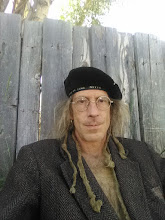

A recent hot topic in this nation is whether or not same-sex couples ought to have the legal right to officially sanctioned matrimony. I have an opinion regarding this matter that is informed by a number of diverse cultural responses to differences of gendering, and also a bit by experience and personal sentiment.
First I ought to note that I have sincere sympathy for those who do not fit within the proscribed traditional norms which this society has, until fairly recently, enforced with no little tyranny. This said, I shall state that I do not believe that "marriage" between a man and a woman and "marriage" between a man and a man or a woman and a woman are interchangeable or the same thing. That said, I do believe that same-sex couples who wish to make a commitment to each other ought to have some sanctioned mode by which they might do so, and through which they might be afforded the same rights and benefits and respect as male-female married couples.
In light of the notion of reincarnation, it is clear that gender is not necessarily something that is intrinsic to a soul. A man in one lifetime might become a woman in another, or vice-verse. Thus it seems not unlikely, assuming the verity of said conception of a soul's pilgrimage through life and death and life and death, etc., that the proclivities and sexual identity from one lifetime might carry through to another. Thus it would be to whatever degree "natural" for some who are born men to maintain an identification with "female desire," or vice-verse. Perhaps some part of said person's self had yet to complete some portion of the dharma of being the gender of a former incarnation.
In regards to the question of "marriage," I am inclined to examine the practices of various cultures which maintain different categories than the dichotomy "male/female" and "man-and-wife" in terms of their constructions of gender and marital union.
Among the Bugis of South Sulawesi in Indonesia, priests known as bissu are imagined to embody both male and female genders as an ideal of balance of said energies. In addition to this third gender, there are calalai, biological females who assume the "traditional" male gender role and may take a female partner as wife, and calabai, biological males who assume the "traditional" female gender role, and may take a male partner as husband. This society finds harmony in this arrangement, and maintains the belief that each of these genders is a necessary part of the balance of their communities. They do maintain differentiations, however, and though all of these genders are considered important and respected parts of an integrated society, they are not "the same."
In Hindu mythology, the incarnation of Siva-Sakti as Ardhanarishwara, male and female united in one body, male on one side and female on the other, is represented as the original state of the genders. Indeed, there is a biological condition called tetragametic chimerism, or "true hermaphroditism," where two separate ovum are fertilized by two separate sperm, and these would-be twins meld into one organism. In such case as one zygote is male and one is female, the result can be an individual with female attributes and genetalia on one side, and male on the other, often with different pigmentation delineated directly down the center of the body, exactly as depicted in the Ardhanarishwara murti ("murti" would translate to something like "sacred representation/symbolic embodiment" or "icon." Above is a murti depicting Ardhanarishwara). Unfortunately, when such sacred children are born, the confused standards of society generally proscribe "corrective" surgery. To me this is sacrilege and a violation against nature (ब्रह्मन् brahman). Such children ought to be revered, and perhaps even have shrines built to honor them. Such beings are reminders of our true Self, both encorporating and transcending gender difference, yet without blurring important and valuable distinctions.
A recent reconstruction of traditional Native American constructions of gender differentiation recognizes the status of differently gendered individuals as of "two-spirits." The Lakota call these differently gendered persons "winkte." The Dine (Navajo) have the term "nadle" to describe such people. In Polynesian culture there is a third gender called "mahu." In India there are physiological men who dress as women known as hijra (as well as other designations in other regions) and in some cases these live in communities with gurus. These are generally devotees of Siva. These peoples living "alternative lifestyles" are generally revered by their culture, often granted sacred status, and are recognized as bridging the supposed dichotomy of male and female, and often as bridging the supposed gap between spiritual and material worlds.
So far as I am concerned, consensuality, lack of coersion and age appropriateness are the most important factors. As the Divine is not bound by gender neither is it necessary for people to be bound by narrow definitions.
To return to the original discussion, it seems that in light of the variation of gendering in these other cultures, there ought to be tolerance, respect, and indeed officially sanctioned legitimacy granted to same-sex unions. My opinion, however, is that said unions ought to be understood as not less than, but not the same as, marriage between a man and a woman, as each of these other cultures acknowledge in their expressions of various deployals of gender identity and sexual partnership.
Namaste . . .






No comments:
Post a Comment